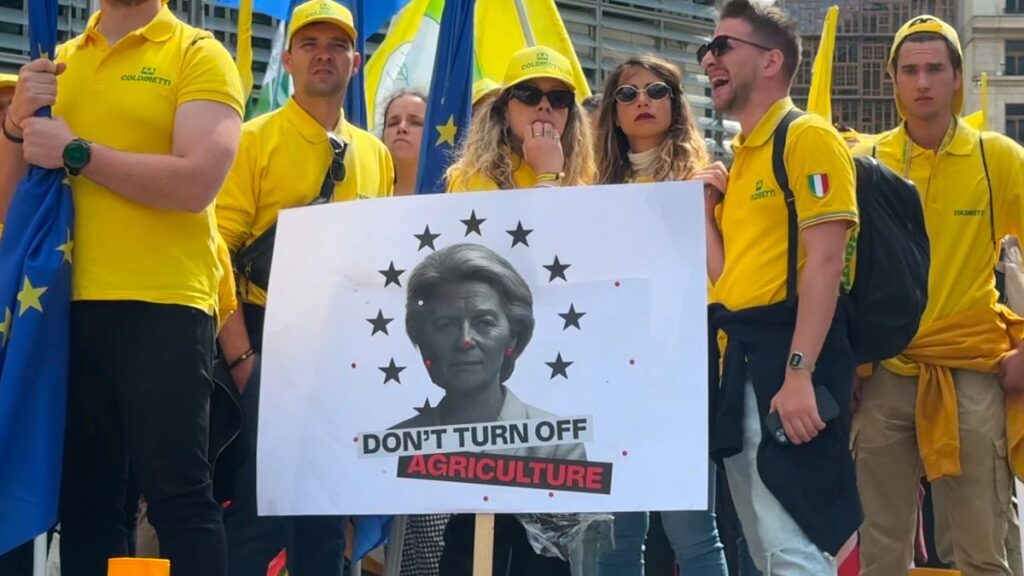The European Commission unveiled a record €2 trillion budget—its largest ever—signalling significant changes and reductions to EU agricultural funding compared to the current 2021–2027 period.
The proposal confirmed earlier reports that agricultural subsidies and regional development funds would be merged into a single mega-fund worth €865 billion.
Within this new single fund, the Common Agricultural Policy (CAP) is ringfenced—meaning a fixed amount is protected from reallocation—for income support totalling €300 billion.
The term income support no longer refers exclusively to direct payments, which have traditionally made up the bulk of the CAP, but it also includes co-funded initiatives that were previously part of rural development, now phased out under the new structure.
This sum also includes a €6.3 billion safety net, doubling the agricultural reserve created in 2021 to address market fluctuations, now increased from €450 million to €900 million over the seven years.
According to the Commission, the €300 billion ringfenced amount represents a minimum and is expected to account for 80% of total agricultural spending.
Additional agricultural investments, although not certain, could be drawn from other policy areas under the single fund, such as regional funds, as well as from the other European competitiveness fund (for instance, under the research programme Horizon Europe).
Does this mean more or less money for farmers?
Making a direct comparison with the previous budget is tricky due to the different overall structure, a fact that the Commission has used to fend off criticism.
Commission President Ursula von der Leyen even claimed that “agriculture will be strengthened”, while EU agriculture Commissioner Christophe Hansen pointed out that “the money that gets directly to the farmers is not cut at all.”
However, a closer look at the numbers paints a different picture.
In the 2021–2027 budget, the CAP was allocated €386.6 billion (with €270 billion specifically for direct payments to farmers). This general figure is remarkably less than the €300 ‘ring-fenced’ for agriculture in the single fund.
Different agricultural policy experts contacted by Euronews all estimate that, when adjusted for inflation, the new proposal represents a 20% to 30% cut in real terms to the EU’s agricultural spending.
“In nominal terms, there’s less money, but we hope that due to synergies with other policy areas, the overall support remains similar,” an EU official admitted on the sidelines of the presentation.
Agriculture’s shrinking share
Symbolically, the proposed changes underscore agriculture’s declining importance in the EU budget.
While the total EU long-term budget grows from €1.21 trillion to €1.816 trillion (excluding COVID-19 borrowing repayments), the CAP’s share drops from 32.2% to just 16.5%.
It now makes up only 35% of the new single fund, which amounts to less than half of the overall budget.
This trend aligns with a long-term shift: in the 1980s, CAP accounted for more than 70% of the EU budget.
The proposed changes reflect the Commission’s shift in priorities, with von der Leyen choosing to reduce spending in areas such as agriculture and cohesion in favour of new initiatives such as defence and competitiveness.
Reactions and protests
The budget plan sparked immediate backlash.
Almost all the MEPs intervening in a heated exchange in the European Parliament with Commissioner Hansen criticised the proposal.
“You’re doubling the MFF, but we’re getting a 25% cut to the CAP. Don’t try and sell that to us as a success story,” quipped MEP Herbert Dorfmann, who hails from Hansen and von der Leyen’s own European People’s Party (EPP).
Outside the halls of the EU institutions, farmers staged a symbolic protest dubbed ‘European Agriculture’s Black Wednesday’.
In a strongly worded statement, the farmers’ lobby Copa-Cogeca accused the Commission of dismantling the “common” aspect of the CAP through “concealed budget cuts” and “complete renationalisation,” masked as “administrative simplification”.
In a bid to appease future concerns of European lawmakers and avoid further unrest of farmers, the Commission introduced several new measures previously demanded by the sector.
A new inflation adjustment mechanism will allow subsidy amounts to be revised if inflation falls below 1% or rises above 3%, aiming to protect farmers from price volatility.
Transition payments of up to €200,000 will be available to farms adopting ambitious transformation plans, helping to de-risk innovation in the sector.
While the Commission hopes these adjustments will mitigate discontent, the debate over the future of European agriculture, as well as its place in the EU’s evolving priorities, is set to intensify in the talks that will take several months before the formal go-ahead to the long-term budget.
Read the full article here

